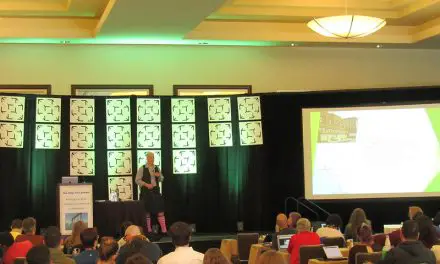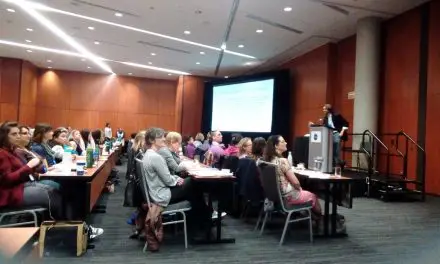Oslo. Europe. Across the Atlantic Ocean. Ask me what would I be doing in 2018 last summer, and I would not have predicted that I will be traveling in Europe for the first time in my life. Canada? Sure, it’s just a catapult vault away, but crossing the Atlantic Ocean seemed as unlikely as giving up my diet of tortillas and rice. The second annual PainCloud Convention in Oslo, Norway, seemed too good to “not go,” and last September, I made a strong commitment to crawl out of my southern California bubble.
In some ways, PainCloud is very similar to the San Diego Pain Summit. Presentation, followed by Q&A, break, repeat. But what I was more interested in was how much do most European physiotherapists and other clinicians understand pain, disability, and exercise compared to the U.S. and Canada, and how would they use that knowledge to their practice. Would their way of doing things be similar to what my American and Canadian manual therapy friends are doing? Would language and culture be significant influences in how they apply their knowledge and communicate with their patients? Well, let’ see what they have to say.
After a few years of being Facebook friends, I finally get to shake hands with Ole Salte, the mastermind behind PainCloud. After he graduated as an osteopath in 2014, Salte worked at a clinic in Norway where he was gradually transitioned from the biomedical approach to understanding pain and health to the biopsychosocial (BPS) framework.
“I was eager to start implementing what I had learned, but unfortunately this didn’t go well with my boss,” Salte told me in an online interview. “I had several conflicts with my boss about how I worked and the accumulation of this made me quit the job. The clinic was within the biggest chain of private musculoskeletal clinics in Norway. The focus on making money really compromised the implementation of a biopsychosocial approach. I’m also a certified personal trainer, and after I quit the job and told my wife that I didn’t want to be a part of this kind of business model. She was well aware of my passion about pain and pain management and convinced me to continue to work as an osteopath. I decided that if I was going to work in this kind of paradigm, I would try my best to change it.
Before PainCloud, Salte started with bits of illustrations that he shared on social media about pain. Later, he made a webinar subscription service in an attempt to make a bigger impact. Even though he had Gregory Lehman for an interview, the webinar didn’t reach out to as many physios as Salte wanted And so, he discontinued it.
“And so, I started Paincloud.”

Before PainCloud, Salte started with bits of illustrations that he shared on social media about pain. Later, he made a webinar subscription service in an attempt to make a bigger impact. Even though he had Gregory Lehman for an interview, the webinar didn’t reach out to as many physios as Salte wanted And so, he discontinued it.
But like any artist or entrepreneur, Salte did not quit. His passion and creativity drove his desire for change. He rolled up his sleeves, flexed his biceps, and started something different.
“The first Paincloud Convention was held in 2017, and to my surprise, it was a success. Now we just had our second convention. Like last year, it was a successful event. I have now gathered a team and we are evolving Paincloud by working on new and exciting projects, like a monthly research review, podcast, online course,” Salte said.
“Paincloud is no successful business in terms of revenue, and my intentions have never been running the financial aspect of the company. It’s a passion-project where I rather spend the money on making high-quality services to facilitate as much change as possible than becoming rich. I really believe different manual therapy professions can play a crucial part for helping people recover or live well with pain. Unfortunately, we’re not as efficient in helping people as we could and in private practice the financial side of this is a big restriction for change.
“I also think it’s a shame that thousands of new therapists graduate each year with an outdated understanding of pain and pain management. Even though I had ambitions of changing the world by myself when I started Paincloud, I realized that won’t happen, but Paincloud can be a part of a collective effort to make meaningful change. A sobering thought is that, in the end, it’s the patient who suffers from our lack of competence and the slow changes of the education systems. Paincloud is an option for therapists to take on a modern understanding of pain and pain management when the educational system can’t.”

One of the main players of PainCloud is Tim Hustad, a naprapath Norway who had written numerous blog posts for the website. “After getting to know him, I thought he would be an excellent MC at our conferences,” Salte said. “He and a colleague developed the educational model called SERA, and it was my pleasure to share it on the Paincloud blog.”
Although PainCloud 2018 had nearly a full house—about 150 clinicians of various backgrounds mostly from northern and central Europe, Australia, UK, and the US—how much of this information is known among European therapists?
“I can’t say that I know how updated we are compared to [U.S. and Canada], but following the social media discussions I would reckon that we are not much better or worse off than most other countries,” Hustad told me in an online interview. “Something tells me that we might be well-informed or exposed to a lot of information, but we don’t seem to take a lot on board.
He told me about an encounter with a naprapathic at a conference in April where Tim Beames and Wim Dankaerts were speaking, who are strong advocates for change in how clinicians should treat and communicate about pain. One of Hustad’s colleagues took a peek at what notes the naprapathic was taking, but none were taken in the first few talks.
“The third talk was a manual therapist who spoke about what specific effects we can expect from manual therapy, and how contextual effects play a major role. The only note made from that talk and from the whole day was, “We should continue to manipulate the spine!”
“For me, the challenge is not so much in making information available, but rather actually affecting a predetermined mind. I guess this example in some ways sums up the brick wall that stands in the way of behaviour change, and in the way of the paradigm shift many of us long for. ”
One interesting presentation that stood out to me was by Dr. Silje E. Reme, who is a psychology professor at the University of Oslo. What interested me was how the information and research of BPS framework could be translated into practice and influence change in the government healthcare policies.
“I hope that my research will provide the right kind of help to patients with chronic pain to help them gain or regain employment,” Dr. Reme explained online to me. “The model I presented, Individual Placement and Support (IPS), is a new and innovative way to help people in to employment by providing individual job support integrated with treatment on the patients’ premises. The preliminary results from the trial appears promising, and if the findings are replicated, I hope this new approach to patients with chronic pain and no employment will be implemented in the Norwegian healthcare system.
Scientists and clinicians worldwide are testing this model of vocational rehab with more than 20 randomized controlled trials. Some countries are already providing this type of care. “However, as far as I know, it is only offered to patients with mental health problems, not patients suffering from chronic pain. So this initiative in Norway is the first attempt to test IPS for patients with chronic pain. Other approaches with some similarities to the IPS, have been tried out other places with similar promising findings. One example is an intervention involving integrated care for patients with chronic low back pain in the Netherlands (Lambeek et al 2010, BMJ).
What Does the Future Bring for PainCloud?
We are currently in the late stages of organizing a Paincloud Convention in the UK later this year,” Salte explained. “We have acknowledged that one of the biggest hurdles for attending our conferences is the location. We want the information to be available and be exposed to as many therapists as possible, and one of our strategies is to start organizing events in other countries to reach more people.”
Despite the high-quality delivery and information that the speakers brought, Salte thinks that the traditional format of the conference is “too passive,” where the audience listens and the speaker projects. There’s not much engagement for the audience.
“I believe that changing the structure of the conference from passive to interactive will lead to more return for the participants in terms of learning,” Salte speculated. “We want the participants to be active and reflective to facilitate more learning. That’s why we had a pilot project this year with group discussions where a pair of speakers sat down with a group and discussed topics the participants wanted to discuss.
“We also increased the time between talks to give the participants time to discuss. Instead of having questions after each talk, we combined the two talks and had a 10- to 15-min Q&A with two speakers on stage. This made it possible for two speakers to answer the same question, and add different perspectives to the question. We also organized a social happening on Saturday evening to further give the participants a chance to discuss with each other and with the speakers.
“I am grateful for the support and help I have gotten from Tim Marcus Valentin Hustad, Lars Avemarie, Sigurd Mikkelsen, Kjartan Vibe Fersum, Morten Ekornsæter and Håkon Fotland. These are people that has inspired, supported and helped me a lot the last three years.”
Why attendees think their colleagues should they attend next year’s PainCloud event, besides to experience the Norwegian hospitality?
“Great information, great connections.” ~ James Stark, Michigan, USA.
“Meeting so many like-minded people and listening to all those great speakers was an amazing experience and gave me a motivational boost – I will definitely attend again next year!” ~ Christoph Schewertfellner, Bavaria, Germany.
“Attending PainCloud felt like “coming home” — to connect with people full of wisdom, humility, and a genuine interest in changing the world of management!” ~ Matilde Broberg Ekstrøm, Copenhagen, Denmark.
A native of San Diego for nearly 40 years, Nick Ng is an editor of Massage & Fitness Magazine, an online publication for manual therapists and the public who want to explore the science behind touch, pain, and exercise, and how to apply that in their hands-on practice or daily lives.
An alumni from San Diego State University with a B.A. in Graphic Communications, Nick also completed his massage therapy training at International Professional School of Bodywork in San Diego in 2014.
When he is not writing or reading, you would likely find him weightlifting at the gym, salsa dancing, or exploring new areas to walk and eat around Southern California.





